Our 10 Favorite Wine Posts Of The Year#
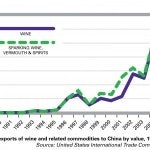
Wine In China: Growing In Popularity But Still A Hard Sell (January 5)
From Hong Kong wine auctions, where mainland collectors are increasingly turning out in force to get their hands on rare and valuable (predominantly French) bottles to the growing number of wine stores and wine events taking place in Beijing and other cities, China has become one of the world’s fastest-growing wine markets.
However, just because the market is lucrative doesn’t mean it’s a cakewalk for wine producers. At the moment, many Chinese purchase wine either as a gift for others rather than for home consumption, and often wine is consumed at large social functions mainly as a status symbol (and because its alcohol content is lower than the traditional social tipple, baijiu). However, as poor consumer education is increasingly displaced by greater wine appreciation, many major wine producers (both Chinese and foreign) are optimistic about their continued prospects in mainland China.
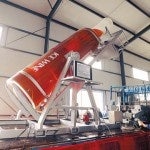
China’s Growing Love Of Wine Goes To The Extreme (January 27)
We knew that wine was pretty popular in China, but the 15ft high, 1,850 liter (489 gallon) bottle of wine produced by Wang Cheng Beverage Company in Liaoning province may be a bit much. The massive bottle, over three times larger than the previous recordholder, a comparatively puny 490 liter bottle of Grande Cuvee by Austrian winemakers Kracher, has succeeded in getting some attention for Wang Cheng (and, by extension, the Liaoning ice wine industry, which producers there see as a niche they can monopolize thanks to their chilly climate).
Considering Wang Cheng (王城饮品有限公司) advertises itself as a producer of everything from hawthorn juice to a form of V8 to ice wine, it’s hard to gauge how serious the company is about being accepted as a top-quality winery. Although we can’t vouch for the taste of the wine itself, if the Shenyang Evening News article is any indication, however, it sounds like the giant bottle did manage to help kick off a pretty great party, if nothing else.

China Tops US As Bordeaux’s Top Export Market Outside Of Europe (March 12)
Amid one of the worst years for the Bordeaux wine industry in recent history, which saw exports down 14% by volume and more than 20% in value and American and British buyers discouraged by the global financial crisis and a strong euro, in 2009 China surpassed the United States to become the region’s largest export market outside of Europe by volume. The Chinese wine market — which Jing Daily regularly covers — is expected to continue to grow briskly, particularly as incomes continue to grow in smaller cities and more sophisticated wine buffs in the country’s cosmopolitan coastal cities buy more — and more expensive — wine for personal consumption.
By 2013, according to a recent survey, Chinese drinkers will consume around 1.26 billion bottles per year, much of it — unless the trend changes drastically in the next three years — red wine.
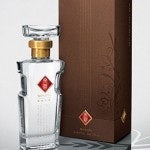
Will Baijiu Ever Become Fashionable? (May 25)
While many outside of China are unfamiliar with baijiu (literally “white spirit”), the tear-inducing, punch-packing traditional liquor of China (something of an ancestor to Japanese sake or Korean soju), it has long been the spirit of choice for many Chinese drinkers. Still ubiquitous on banquet tables throughout the country, baijiu’s hegemony in the Chinese alcohol market has only been seriously challenged in the last few decades, after China’s “reform and opening” process brought foreign spirits flowing back into the country after an essentially 30-year-long hiatus.
However, in that short amount of time baijiu — much like the bicycles and Mao suits that characterized an earlier generation — has been sidelined by young urban Chinese in favor of BMWs and Prada, wine and whiskey.
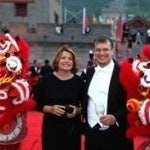
This weekend, Acker Merrall & Condit — “America’s Oldest and Finest Wine Shop” – got in on the game with a massive wine auction in Hong Kong, selling 97% of its more than 19,000 bottles and pulling in a grand total of US$19.5 million, well over its pre-sale estimate of $16 million.
What set this auction apart from other recent sales in Hong Kong is that the proceeds from the Chateau Margaux lots — which, according to 21Food, took in a grand total of HK$3,098,800 (US$397,579) — will be donated to the preservation of the Great Wall of China, indicating the company’s intention to more proactively target the mainland China market.
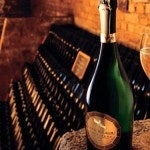
Champagne Houses Hoping For Shift In Chinese Wine Consumption Habits (July 20)
The rapid ascendancy of Hong Kong as one of the world’s main wine auction hubs — and China’s ever-increasing thirst for expensive imported wine and spirits that connote the good life — has been a godsend for major champagne houses. Though champagne and sparkling wine consumption lags far behind that of red wine in the China market — mainly because buyers and drinkers remain overwhelmingly male — producers of white wines and champagne have said they expect to see diversification away from Bordeaux in coming years as more Chinese women become “wine converts.”
Recently, G.H. Mumm, the world’s third-largest champagne house, showed its commitment to bubbly evangelism by introducing one of its most best bottles, the 1998 Cuvee R. Lalou, to the Hong Kong market.
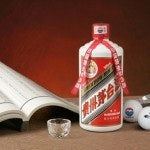
Jing Archives: Spirits Maker Moutai Fights Counterfeiting With $20,000 “Red Diamond” Series (September 22)
To reassure consumers that their pricey bottle of Red Diamond is the real deal, Moutai will “abandon traditional marketing channels” for this sub-brand, only selling directly to consumers through custom channels. Additionally, each bottle of Red Diamond will have a unique serial number, and will be packaged in special boxes that feature locks that buyers can open only after calling a dedicated hotline to retrieve the password.
While this sounds more Mission Impossible than Cheers, according to Moutai it is necessary to ensure the product’s authenticity — something that China’s high rollers are often more than willing to pay for, particularly in the wake of recent food and drink safety scandals.
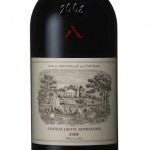
Bottles Of Lafite ‘08 To Include Imprinted Chinese Character (October 26)
In a hat-tip to one of its most important and loyal markets, Chateau Lafite (previously on Jing Daily) will imprint each bottle and magnum of Lafite 2008 with the Chinese character for the number eight (八), traditionally considered an auspicious number in Chinese culture, to commemorate its new vineyard venture in China. As Decanter writes today, Lafite is in partnership with CITIC, China’s largest state-owned investment company, to develop 25 hectares of vines on the Penglai peninsula in China’s Shandong province, an area that some commentators have called “China’s Bordeaux.”
Choosing the character for “eight,” which resembles a hill, has added meaning, then, as a Lafite spokesperson said in an interview this week, “The shape of the symbol seems to offer a perfect representation of the slopes of the vineyard and commemorates the launch of our Chinese wine project.”
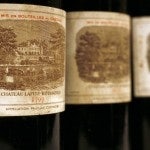
Lafite Sets New Auction Record As Hong Kong Wine Frenzy Continues (November 10)
These are interesting times for anyone keeping an eye on (or collecting) Chateau Lafite, the wine of choice for China’s burgeoning wine collectors. This weekend, Sotheby’s held its eighth wine auction series of the year in Hong Kong, again achieving 100% sell-through rates, but the figure that really stands out is the HK$1.8 million (US$230,000) spent for each of three bottles of rare 1869 vintage Chateau Lafite, sold to an Asian telephone bidder. These bottles not only blew their pre-sale estimates of HK$40,000-60,000 out of the water, they also set a new world record for the most expensive individual bottles of wine ever sold at auction.
The previous record-holder, also by Chateau Lafite, was a 1787 vintage engraved with the initials of President Thomas Jefferson, bought at auction by the publisher Malcolm Forbes for £105,000 pounds ($168,000) at Christie’s in London in 1985.
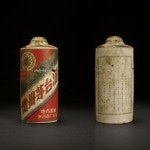
Baijiu Enters The Land Of Lafite As Rare 1958 Maotai Sells For $220,000 (December 16)
It seems that Chinese collectors aren’t only driving the prices for Chateau Lafite or Chateau Cheval Blanc to new heights, they’re also on the hunt for rare tipples from a bit closer to home. This week, a bottle of 1958 Maotai baijiu sold for 1.45 million yuan (US$218,510) at auction in Hangzhou, setting a new record for the traditional Chinese spirit.
Baijiu is big business in China, with the country consuming some $27 billion worth of the clear liquor per year and consumption rising 20% a year for the last five years, according to the Wall Street Journal. But despite the popularity of high-end baijiu — which can often run into the tens of thousands of dollars per bottle — among China’s elite, it’s rare to see the same exuberance for a bottle at auction that we’d expect to see at a grape wine auction.